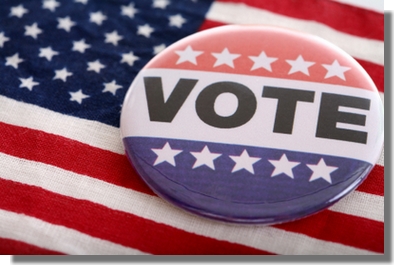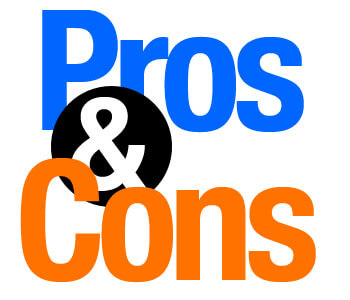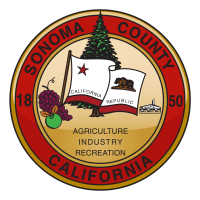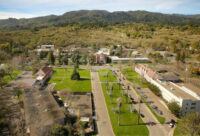Sonoma’s Measure W would extend the existing protections provided by the current Urban Growth Boundary (“UGB”), such as preventing urban sprawl and preserving agricultural land and open space, shall the City of Sonoma until December 31, 2040, and, require that future changes to the UGB be approved by the voters except under limited circumstances requiring a 4/5ths vote of the Council.
The Sun invited these 500-word arguments in favor and opposition of the proposal. Each is signed by its author.
Yes on W
Sonoma’s first 20-year Urban Growth Boundary (UGB) was passed in the year 2000 with nearly 65% approval by the voters. In November the UGB is on the ballot again, for a 20-year renewal.
The intentions of the original UGB and its renewal are to prevent sprawl, assist in keeping the city fire-safe, protect agricultural uses and open space, reduce our carbon footprint, encourage wise land-use planning, and promote the creation of affordable housing. It accomplishes this by “drawing a line” around the city beyond which new development is not allowed, except in the case of affordable housing; any new land added (up to 20 acres over 20 years) can only be developed with 100% affordable housing, and of that, 51 percent must be for low and very low-income residents. These provisions are the strongest affordable housing land-use mandates in Sonoma’s history.
We all know what sprawl looks like: stretches of commercial strip centers and cookie-cutter housing developments served by clogged roadways. The UGB discourages sprawl by making land speculation at the city’s edges unprofitable. For 20 years it’s worked, and the renewal of the UGB will let it continue to work for another 20 years. The pleasure of living in a small-scale community is why many of us enjoy being here, and keeping Sonoma small-scale ensures that we remain an inclusive community while retaining our historic town’s unique character and rural quality.
The world is facing a climate emergency unlike any that we have ever experienced. Renewing the UGB lets us do our part locally to protect wildlife, habitat, and riparian corridors. Every other city in Sonoma County has renewed its UGB, and Sonoma needs to do its part.
The future requires careful, cost-effective, and prudent use of our existing urbanized areas. In addition to building on vacant parcels, through creative planning, underutilized commercial properties can be redeveloped for housing; a recent survey by the City of Sonoma indicates there’s room for many hundreds of new homes within the UGB. Ensuring that future development includes affordable housing for lower-income residents is a matter of city zoning policy and government financial assistance. When it comes to creating affordable housing, the stumbling block is not available land, it’s available money.
A few opponents of UGB renewal claim UGB renewal supporters are racist, dishonest supporters of economic apartheid. Unfortunately, name-calling and insults impugning the character and integrity of others are all too typical in today’s overheated political environment. Without substantiation, they claim the UGB violates state and federal law, despite Measure W having been thoroughly vetted by the city’s legal counsel.
Current City Council members, every sitting Planning Commissioner, past Mayors, and scores of citizens of all political persuasions, alongside the Sierra Club, Sonoma County Conservation Action, Greenbelt Alliance, and North Bay Labor Council support Measure W because they know it makes sense for Sonoma. Vote YES on Measure W.
— Jack Ding, Citizens to Renew the City of Sonoma’s Urban Growth Boundary

No on Measure W
The Urban Growth Boundary draws a line around the City of Sonoma to restrict urban development. The 2000 UGB is now up for renewal through 2040 via Measure W.
The UGB’s stated aim is to limit “sprawl” with a “greenbelt” buffer. The reality is that the small area the UGB defends abuts an unincorporated area that houses 75 percent of Sonoma residents. The area within the UGB is mostly comprised of expensive single-family homes – so much for valuing density. The income disparity, housing value imbalance, and racial divide between these two areas are stark, evidencing economic apartheid and literal segregation.
Voting NO on W is not a vote against green preservation. Voting NO on W is not even a vote against a UGB. Sonoma should absolutely protect open land – authentically, however, while protecting the majority of people that live and work here.
Voting NO on W is simply a rejection of the UGB renewal as written, which fails to provide the vision necessary to steer Sonoma’s land use for the future. Measure W abandons core constituents then binds voters from amending its limitations for twenty years.
Since 2000, multiple crises have exacerbated the housing crunch. Sonoma has deepened its deficit of affordable units and continually failed to meet state-mandated goals for housing. Measure W proponents who claim to support affordable housing are clearly only virtue signaling. Just look at the data.
To move forward, Sonoma must acknowledge and amend its racist and exclusionary residential history. Sonoma within the UGB is 87 percent white. The Springs is 50 percent LatinX; SVUSD has 65 percent LatinX enrollment. There are still homes sold within the UGB with CC&R clauses that literally deny Black homeownership. The idea of a UGB is not the enemy, but defending renewal without revision is an exclusionary bludgeon in the fight against equity.
When maintaining the “rural character” of Sonoma is prioritized over legitimately meeting the needs of agricultural workers, people are choosing to indulge a bucolic lifestyle fantasy that is fundamentally racist. There is a vast imbalance between the workers within the UGB and those who reap its real estate valuation. Segregation denies wealth from essential workers and residents of color. Embrace what a rural community actually looks like. Let all Sonomans benefit from the place they serve.
The proposed UGB extension adds language requiring an unusual supermajority, a four-fifths City Council vote to make future changes. This sets a dangerous precedent and Sonoma voters should signal strong disapproval of such political tricks.
It is fearmongering to suggest that a lapsed UGB would usher immediate overdevelopment. City Council, Planning Commission, and public reviews are natural checks.
Choosing to make affordable housing plausible in the UGB is not to welcome sprawl, overdevelopment or environmental degradation. Choosing the “environment” ahead of housing equity is a false dichotomy. We must promote environmental, economic and social justice simultaneously.
The UGB must be sent back to City Council for revisions. Demand affordable housing, social sustainability, and actual integration in Sonoma. Vote NO on W.
— Emma Lipp, Sonoma resident
More info on Measure W on the City website
Editorial: The Sun recommends






Random thoughts on the Pro’s & Con’s of the UGB.
Even absent a UGB, no for-profit developer will build ‘affordable housing’ if the profit margin is not worth their while. The cost of land and construction in the Valley in & outside the UGB “is what it is” — astronomical — and likely to remain so. Those who paid a fortune for it in the first place aren’t likely to give it away at “affordable housing” bargain prices and no one expects them to. Even middle-caste families (teachers, nurses, city employees, business owners, etc.) struggle to afford housing anywhere in the Valley, to buy or to rent. A few more thoughts:
(1)If the UGB disappeared tomorrow, not one stick of affordable housing is likely to be built without a charitable funding mechanism – public and/or private — to subsidize and invest in what is essentially non-profit housing development. Creating such a funding mechanism should be the focus of everyone — city, county, school & hospital districts, local businesses, developers, workers, the faith community, etc. — interested in creating more affordable housing for those who work here (By definition those who already live here can already “afford” to) .
(2) Even without a UGB, if 500 units of AH were built tomorrow in or around the City of Sonoma, there would be no guarantee that any family now living in the Valley would be lucky enough to win the ‘lottery’ and move into any of it. It could just as likely become ‘affordable’ for a family from Vallejo.
(3) As to the very laudable goal of overcoming/addressing racism, etc (perceived & actual), it is unlawful to restrict access to AH according to race, ethnicity, national origin, etc. The residents of new affordable housing (such as that constructed recently in the Springs) are likely to reflect the racial/ethnic/etc mix of the population of the region as a whole, whatever it is, even if limited by income. i.e., majority caucasian.
As to the ‘whiteness’ of city residents (supposedly 87%), adding affordable housing outside the boundaries of the current UGB will do nothing to change the character of the population living within it.
Per its original purpose, the UGB has, in fact, limited ‘sprawl’ development (i.e., buildings & concrete) by withholding city services to areas outside its limits, leaving the city largely surrounded by open space greenery save for adjacent Springs communities. Were that not the case, a ride from the Plaza through traffic to the nearest open space would by now have become considerably longer.
The essential Measure W decision for registered voters living in the City limits is whether to change that. For as important and urgent as solving racial, social and income inequities are, that’s the only thing No on W would accomplish.
For more info go to Fred Allebach’s Sun blog “Connecting the Dots” and his Facebook page
Sprawl occurs when there is affordable buildable land, sewer capacity and plenty of water (or at least two of these assets). Sonoma Valley has none of these. Your fear of sprawl is irrational and the shortage of housing will impair the ability of working class families to live in Sonoma. Sleep now in the fire
No Way is 100% correct. No matter what the arguments for and against are. If we want affordable housing the focus of our elected officials should be to find the spots to build it and find the non profits that do it and just get it done. No Way does point out correctly that there is no guarantee that Sonoma Valley residents that qualify will be the ones chosen, as the laws are not written that way. When Fetters Apartments went in over 800 families from all over applied for the less than 100 spots. Expanding the UGB or depending on the free market to make it happen will do nothing. As to sprawl, it can happen even with high priced land and a lack of water. As long as the market is there for million dollar homes and there is a spot to put them in, you will have sprawl if it is allowed and there is money to be made. I also think it is strange that the Springs is referred to as some type of ghetto. When it reality it is gentrifying at a pretty fast rate. That may actually happen faster if it were incorporated into the city. Each time a small or run down house sells, it is remodeled and sold at a high price. There are lots of places both in the city and the unincorporated areas that could work for affordable housing, but the will to really do it and stop using talking points is really not there.
To read the facts about Yes on Measure W check out our website at http://www.sonomaugb.org Yes on Measure W is good for open space, the climate and affordable housing. Developers have built 100 units of affordable housing in the city in the last five years. There’s room inside the city to build plenty more — least 1,000 more units in the next 20 years. The opponents are not reading Measure W correctly. It allows for up to 20 acres to be added in 20 years if needed. Losing voter approved UGB would be a huge mistake and the first city in Sonoma County and the Bay Area to make it. People are upset about a number of things but the UGB is not the cause or the solution of our social and housing ills. The voter approved UGB simply keeps the voice of the people having a say in how our town grows. Without that, all bets are off.